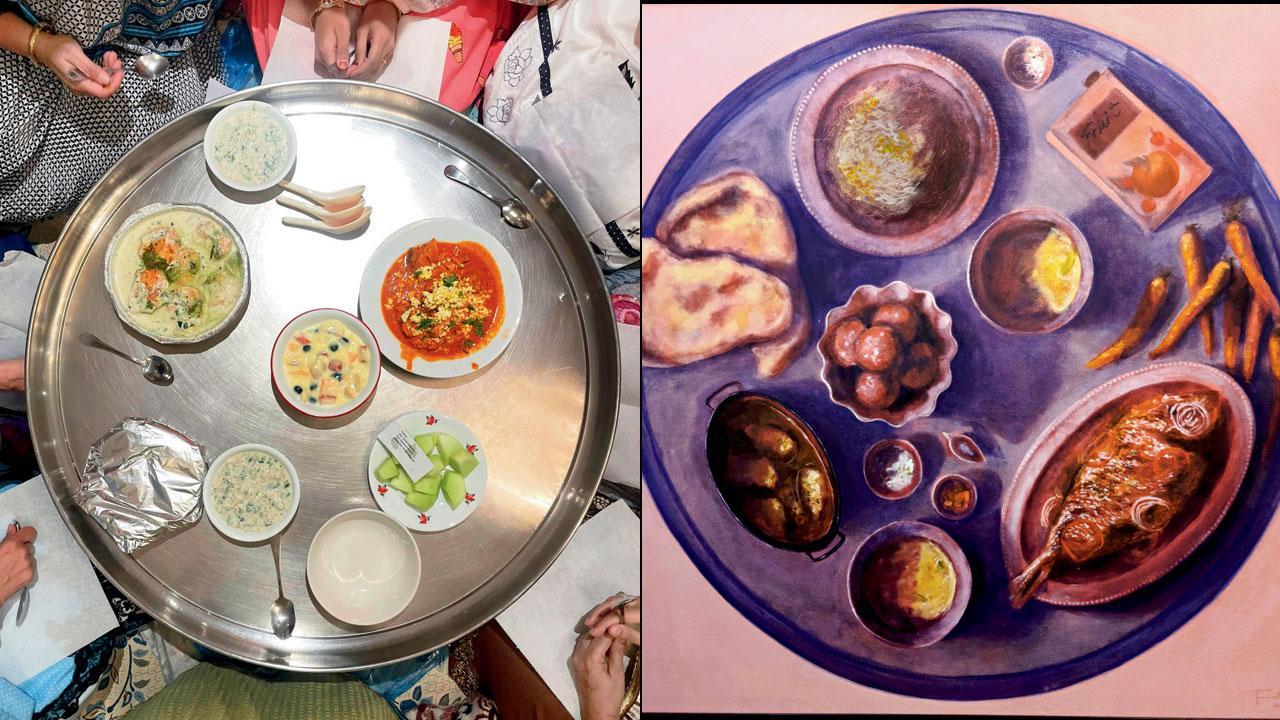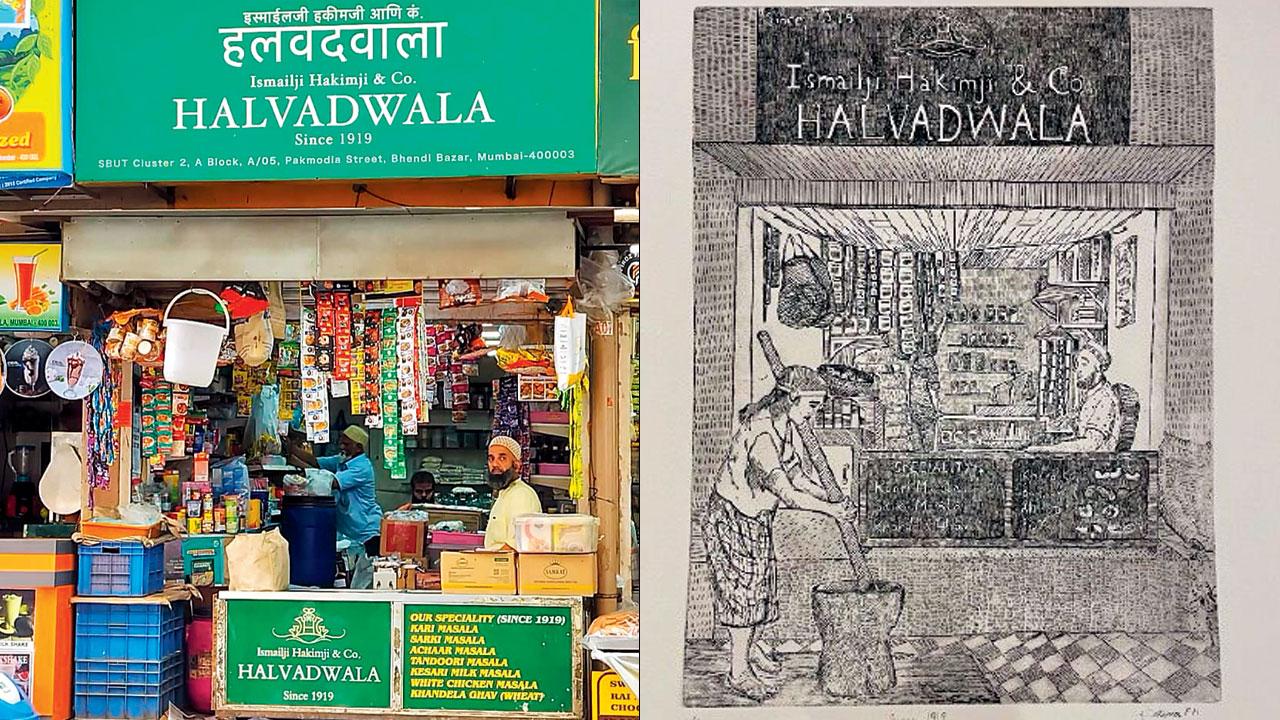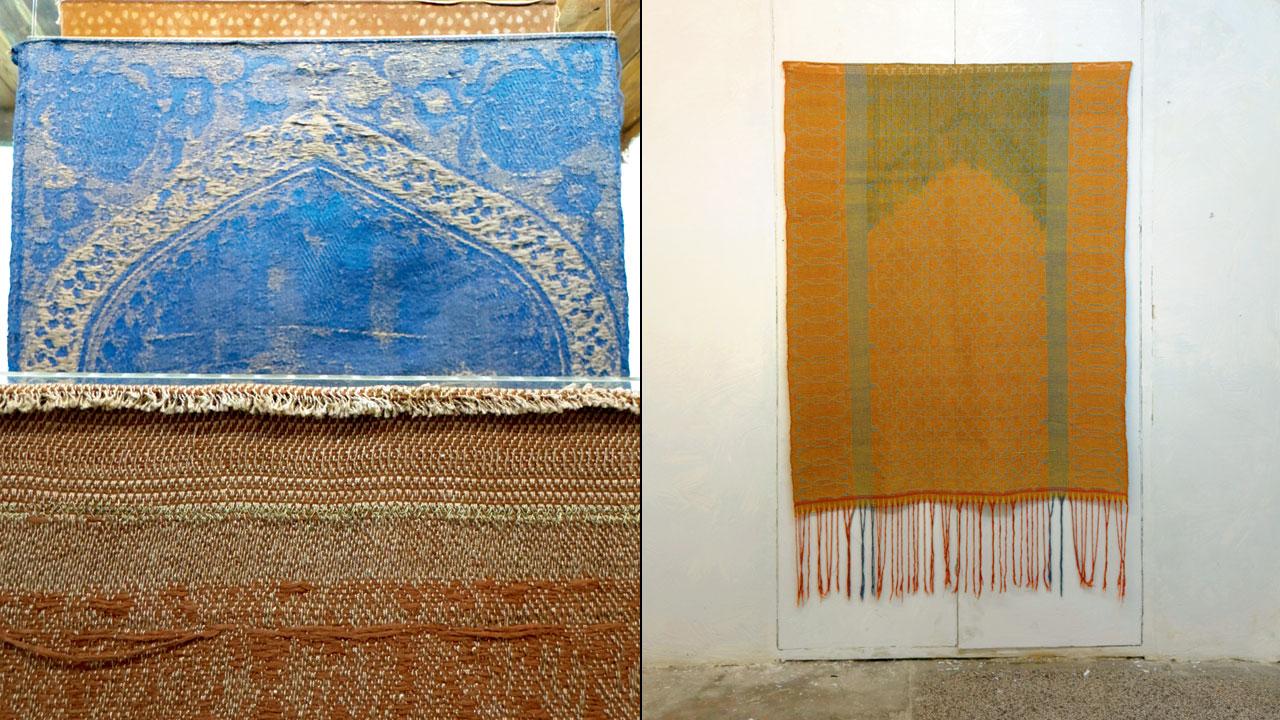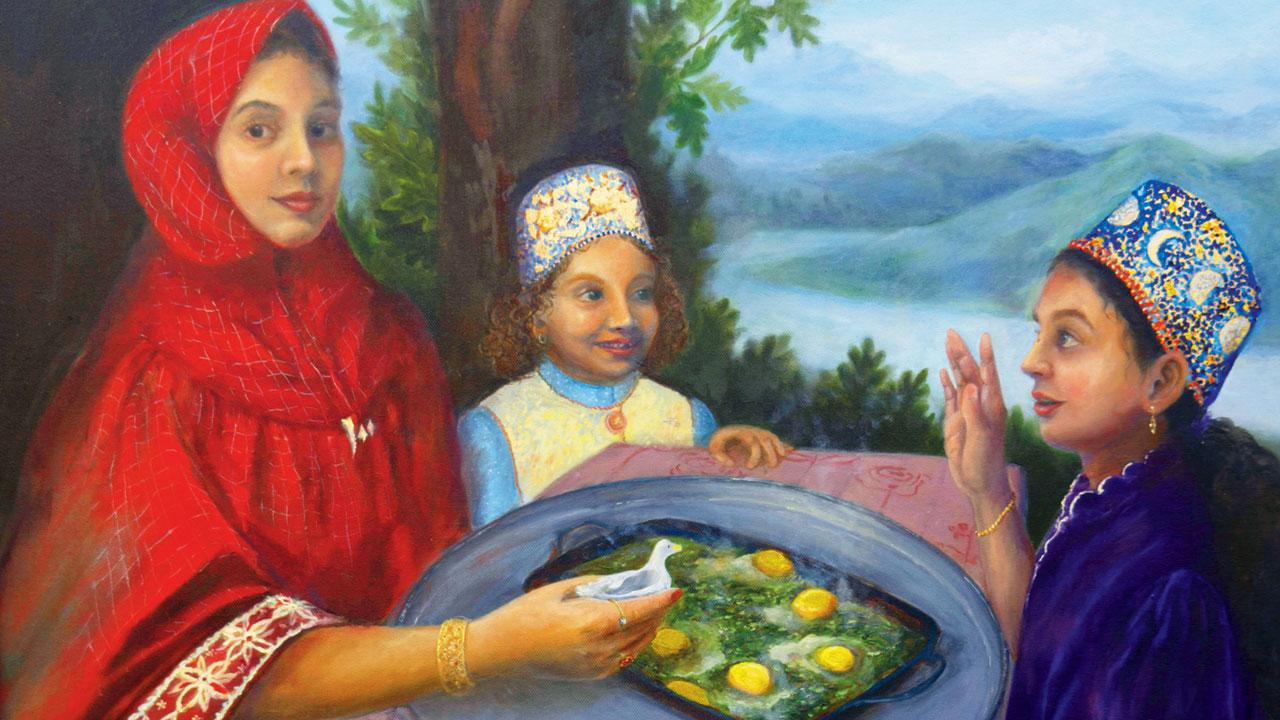Fatema Halvadwala’s life through the Dawoodi Bohra community redefines her approach to art. This month, the artist joins five other female creators at a gallery in Colaba to reshape ideas of memory and identity

A Bohri thaal and DMY, oil on canvas, by Fatema Halvadwala
The German poet Johann Wolfgang von Goethe called it the ‘dim vastness spread upon our soul’. It might be an obscure way to describe memory, but it is relatable. At the Stranger’s House Gallery, co-curator Shamooda Amrelia agrees, noting, “As a concept, it is a very broad one. To make it more concise and resonant to an individual requires objects more tactile and experiential.” These objects find shape in the artworks on display at the gallery as part of their ongoing exhibition, Beyond Belonging that features six women artists.
ADVERTISEMENT
City of stories
Among the six artists is Fatema Halvadwala. The 25-year-old is a fifth-generation member of the Dawoodi Bohra community in the city, and a recent graduate of the Master of Fine Arts (MFA) programme from the New York Academy of Art. “Art is all I knew since childhood. There was a long veranda to our house at Bhendi Bazaar that was my first canvas,” she reveals.

The Halvadwala store at Bhendi Bazaar; (right) Since 1919, intaglio on paper
Halvadwala traces her roots to the city of Halvad in Gujarat, from where her great-great-great grandfather arrived in the neighbourhood of Bhendi Bazaar where he set up a provisional store in 1919. An upgraded iteration of the original store now titled Ismailji Hakimji Halvadwala and Co. still functions out of Pakmodia Street. Today, they are best known for their kaari — a spice mix that is a must in every kitchen of the community. “It is a Dawoodi Bohra masala used in our curries that has cashew as the main ingredient,” she reveals.
Touch of flavour
Naturally, Halvadwala’s memories are defined by the food and its communal experience. The paintings began in her final year at New York, Halvadwala shares, adding, “One of my defining memories is during Ashara Mubarak, where the entire community gathers, eats and serves food together. There is one team that cooks, one team that handles the logistics, and another that serves. I used to be the Balti Ben, serving dal in baltis,” she laughs.

Fatema Halvadwala
For the artist in her, it was not just the food, but also the aesthetics that stood out. “There is a geometry and dynamic to the thaal that stands out. With salt placed at the centre, two salads at equal distance on the plate, a sweet, a gravy with roti or naan. Then, there are bowls for soup or drink glasses on the side,” she goes on. Place these alongside the colours of people and their dresses, the conversations and stories, and the lifestyle of a community emerges. When she moved to New York in 2022, the distance enhanced the intensity of these memories, and fuelled her work.

(From left) Severed, and Untitled 1 by Sahiba Dohadwala
Shaping memories into art
It is these memories that the curators sought to shape through the many different mediums. Co-curator Alessia Riva shares, “We intended to create an exhibition that starts from the roots and then goes beyond to change. It reflects an idea of performativity that originates from the past, from one’s own situated personal experiences, but then also travels from body to body.”

Be Our Guest, oil on canvas, by Fatema Halvadwala
Another Mumbai resident, Sahiba Dohadwala turns to textile and prints to explore the fading memory of facades and architecture. From her textiles, tactile and physical, carvings and architectural forms emerge. Or Mohanjeet Grewal’s archival photographic reels that unearth the memories of India from the 1960s decade.
For the artists, mainly women, identity was an unconscious presence. Halvadwala admits, “Although I never felt the pressure of being unable to do something because I was a woman, there was a touch of rebellion to choosing food as my mode of storytelling.” It is for this reason that she went heavy on the girly-pop style of her artworks, she says. Amrelia notes, “As we encountered the artworks [all of them], the missing blocks fell into place. You have to look at the works in a non-linear form, to find parts of the whole conversation.”

Shamooda Amrelia and Alessia Riva
Till September 30; 11 am to 6 pm
AT Stranger’s House Gallery, ground floor, Clark House,
Wodehouse Road, Colaba.
 Subscribe today by clicking the link and stay updated with the latest news!" Click here!
Subscribe today by clicking the link and stay updated with the latest news!" Click here!







